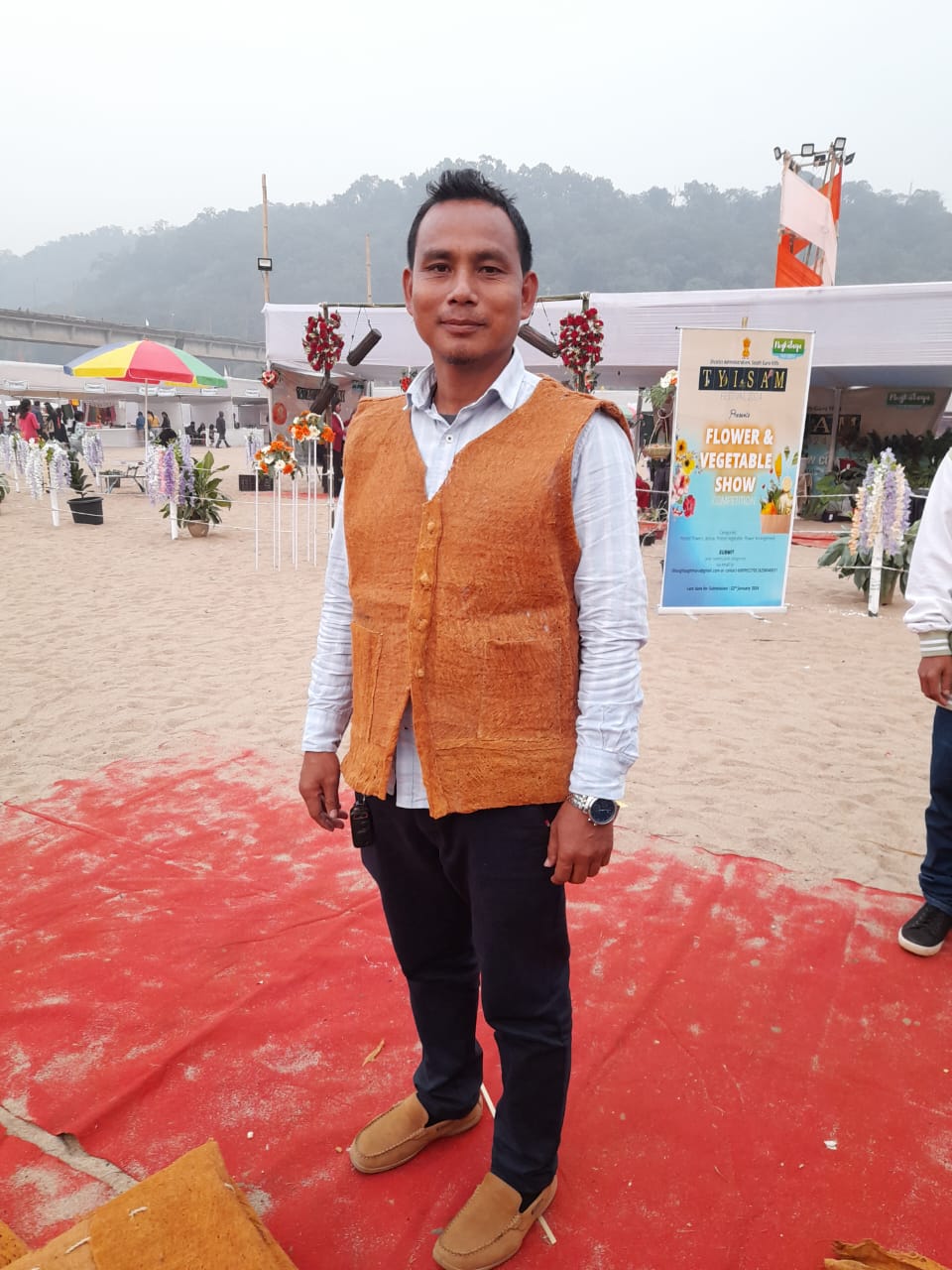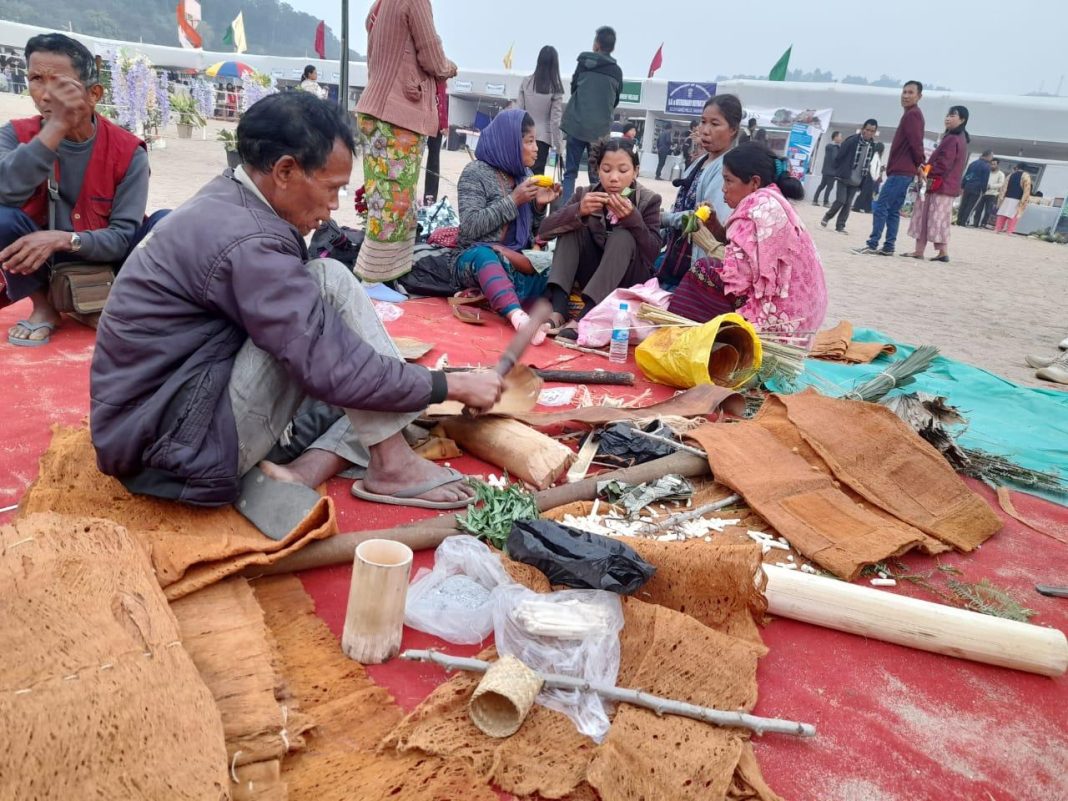Baghmara, Jan 27: The art of weaving a dress using the bark of a tree and worn by ancient Garos, when they came down from Tibet and settled in the hills of now Garo Hills, was once confined to the pages of history as modernization took over and some of the age old practices became extinct.
But now, a kind of silent revival is beginning to take shape thanks to the efforts of a group of women from a self help group in the Siju-Rongsu area of South Garo Hills.
Encouraged by the Meghalaya Government to form SHGs across villages in the state, one women SHG in the Siju Rongsu region has begun reviving the ancient art form of weaving clothing material from tree barks.
This unique and extremely rare form of handwoven textile where the raw material is derived from the bark of the locally available Pakram tree was showcased for the very first time at the Tyisam beach festival in Baghmara on January 24th and 25th 2024.
The male artist engaged in weaving this material caught the eyes of many a visitor and soon a handful of finished products, particularly the eye catching traditional jacket from the bark of the tree, were flying off his shelves.

The jackets have even been noticed by some of the viewers of HUB NEWS which presented a clip of the preparation leading to queries about its export as far off as national capital Delhi.
Given the intricate and long hours of work required to come out with the finished products, only a handful are being made, currently.
“A lot of time is required to prepare the bark sheets which form the backbone for any of the finished products,” says weaver Jibon S Marak who participated at the Tyisam Fest with some of his finished jackets.
This ancient art form of weaving has been passed on from one generation to another in the household of Jibon S Marak, he told HUB NEWS.
“It is time consuming and delicate work at the first step itself when the bark is stripped off the tree. The rolling of the extracted barks and keeping them in one position for 3 days is just one part of the work. It is when the beating of the bark with a wooden stick begins that the most time is spent. The beating can take weeks until the fibre is stretched to the maximum before it is cut and stitched using a locally available vine in place of any modern era thread,” says the weaver.
Also, the bark can be extracted and work can start on the mats only after the monsoon season is over because water can damage the fabric.
The long sheets of the finished material are rolled like cloth and kept on standby for cutting and stitching into jackets, as drapes for women to wear (like a traditional Dakmanda) and even like a headgear or traditional kotip.

Ancient garos also used it as a mat to sleep on or even as a thin sheet of covering to beat the winter cold.
Garos have a rich history of traditional costumes and ornaments consisting of eking, turban, Kotip, Nadongbi, Natapsi and Ripok, among many items that continue to be worn by garo men and women even today.
The garo Dakmanda worn by women is one of the most attention-grabbing traditional wear of the tribe and it continues to be in high demand not just among the tribals but also tourists leading to a booming export of the dress.
Read: PMAY-G initiative grants new home to Amlarem resident in West Jaintia Hills district
WATCH:
Find latest news from every corner of Northeast India at hubnetwork.in, your online source for breaking news, video coverage.
Also, Follow us on-
Twitter-twitter.com/nemediahub
Youtube channel- www.youtube.com/@NortheastMediaHub2020
Instagram- www.instagram.com/nemediahub





